Tom's Hardware Verdict
The CX650F is a worth considering product if you are out for a midstream power supply with RGB lighting features.
Pros
- +
Full power at 47 degrees Celsius
- +
Good transient response at 12V
- +
High enough efficiency
- +
Low inrush and leakage current
- +
Compatible with the alternative sleep mode
- +
Fully modular
- +
Highly-customizable RGB lighting
- +
Comes in two colors
Cons
- -
Expensive
- -
Load regulation could be tighter
- -
Excessive EMI emissions
- -
Short distance between connectors
Why you can trust Tom's Hardware
The Corsair CX650F achieves decent overall performance and good efficiency levels, thanks to its modern platform. Because of the high-end, for this category's standards at least, platform, the price is on the high side, and this is the only major downside of this product.
The only unit with similar specs and RGB lighting that comes to our mind is the Thermaltake Smart Pro RGB 650W, which costs ten dollars less. Still, it uses an inferior platform with a double forward topology instead of the half-bridge and LLC resonant converter that the Corsair CX650F utilizes. The Corsair CX650F's RGB lighting can be controlled through an optional controller and synced through a compatible motherboard's (see best motherboards) software. There is also manual control, and thanks to the two-color option, this line looks to tick all the boxes for users wanting a good, RGB-lit PSU that won't empty their wallets. While it doesn't make our list of the best power supplies, the CX650F is a compelling choice.
The CX-F line consists of three models. All of them feature RGB lighting and utilize a platform that is provided by HEC. The platform's design is modern. Similar designs are usually found in higher efficiency and more expensive PSUs. In the 80 PLUS scale, these units are certified as Bronze, while in Cybenetics, they meet the requirements of the ETA-A- and LAMBDA-Standard++ efficiency and noise levels.

Product Photos




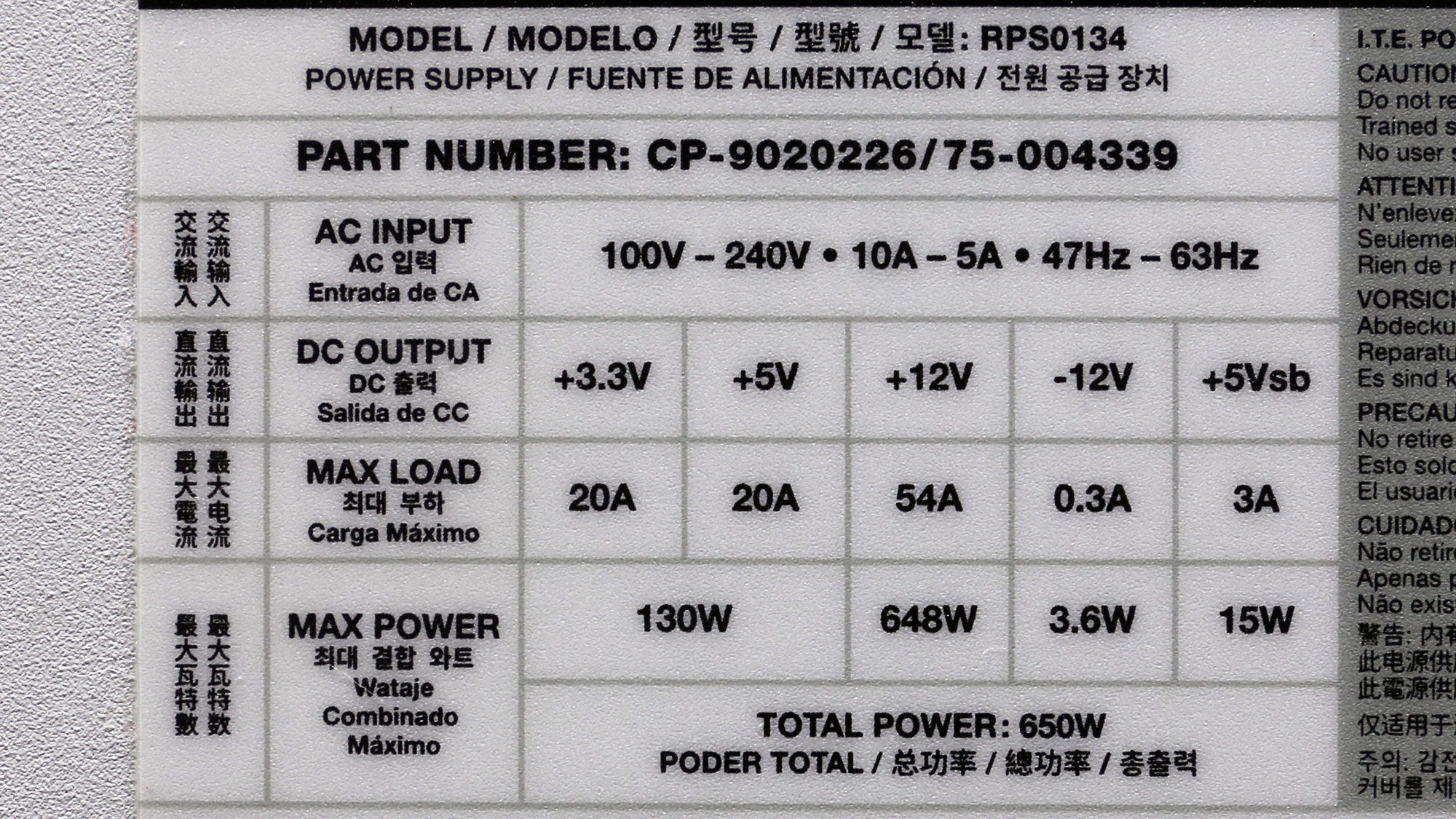






The Corsair CX-F models come in two flavors, black and white, with matching cables. It was a nice move from Corsair to provide two options, although the white version is a bit more expensive (five dollars more) than the black. The fully modular design also plays a significant part in the increased prices of these units. The Corsair CX650F that we tested goes for 100 dollars in the black version, while the white one is listed at $105. The five-year warranty justifies, to a degree at least, the increased prices.
The RGB lighting can be controlled through the optional Corsair iCUE RGB lighting controller or by a compatible mainboard through the included 5V ARGB adapter. If you don't want to buy the Corsair controller and your mainboard doesn't support RGB control/sync, you can set the PSU's lighting to your liking through a push-button located at the front.
To cycle through lighting modes, you have to press and hold the button mentioned above for about three seconds. To cycle through colors, if the current mode isn't rainbow, you press the button shortly. You should also keep in mind that the push-button control won't work if the PSU is in software control mode, connected to the Corsair controller or to the mainboard.
The available lighting modes are: rainbow wave, rainbow, rainbow breathe, rainbow blink, sequential, solid, single blink, pulse, and you also have the option to disable the fan's lighting.
Get Tom's Hardware's best news and in-depth reviews, straight to your inbox.

Box Photos
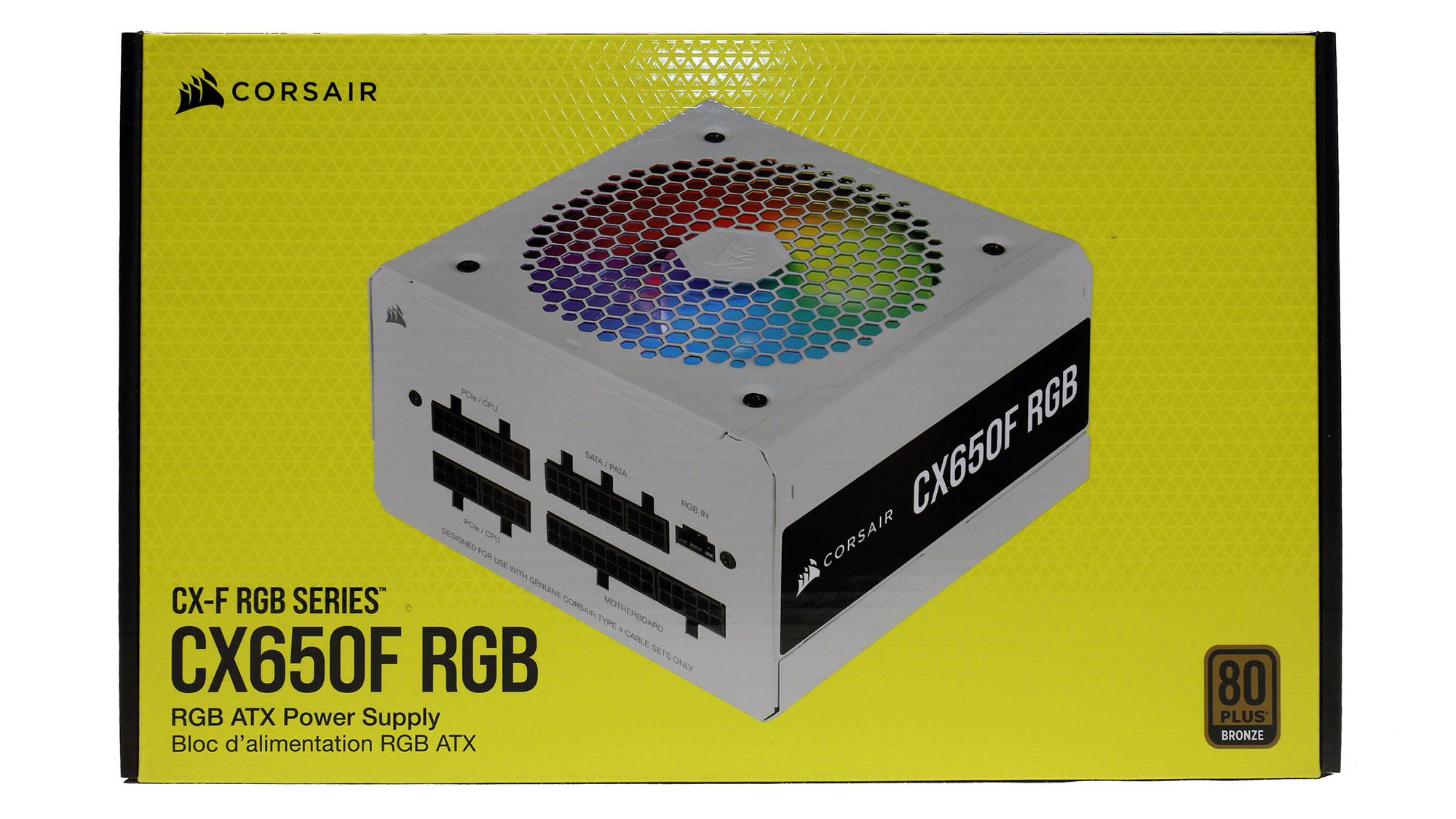





Specifications of Corsair CX650F
| Manufacturer (OEM) | HEC |
| Max. DC Output | 650W |
Efficiency | 80 PLUS Bronze, ETA-A- (85-88%) |
Noise | LAMBDA-S++ (30-35 dB[A]) |
Modular | ✓ (Fully) |
Intel C6/C7 Power State Support | ✓ |
| Operating Temperature (Continuous Full Load) | 0 - 40°C |
| Over Voltage Protection | ✓ |
| Under Voltage Protection | ✓ |
| Over Power Protection | ✓ |
| Over Current (+12V) Protection | ✓ |
| Over Temperature Protection | ✓ |
| Short Circuit Protection | ✓ |
| Surge Protection | ✓ |
| Inrush Current Protection | ✓ |
| Fan Failure Protection | ✗ |
| No Load Operation | ✓ |
Cooling | 120mm Rifle Bearing Fan (NR120L) |
| Semi-Passive Operation | ✗ |
| Dimensions (W x H x D) | 150 x 85 x 140mm |
Weight | 1.38 kg (3.04 lb) |
| Form Factor | ATX12V v2.4, EPS 2.92 |
Warranty | 5 years |
Power Specifications of Corsair CX650F
| Rail | 3.3V | 5V | 12V | 5VSB | -12V | |
|---|---|---|---|---|---|---|
| Max. Power | Amps | 20 | 20 | 62.5 | 3 | 0.3 |
| Watts | 130 | 648 | 15 | 3.6 | ||
| Total Max. Power (W) | 650 |
Cables & Connectors on Corsair CX650F
| Modular Cables | Cable Count | Connector Count (Total) | Gauge | In Cable Capacitors |
|---|---|---|---|---|
| ATX connector 20+4 pin (610mm) | 1 | 1 | 18-20AWG | No |
| 4+4 pin EPS12V (650mm) | 2 | 2 | 18AWG | No |
| 6+2 pin PCIe (600mm+150mm) | 2 | 4 | 16-18AWG | No |
| SATA (450mm+115mm+115mm+115mm) | 1 | 4 | 18AWG | No |
| SATA (500mm+100mm+100mm) | 1 | 3 | 18AWG | No |
| 4-pin Molex (450mm+100mm+100mm+100mm) | 1 | 4 | 18AWG | No |
| iCUE RGB cable (500mm) | 1 | 1 | 28AWG | No |
| Motherboard ARGB cable (300mm) | 1 | 1 | 28AWG | No |
| AC Power Cord (1380mm) - C13 coupler | 1 | 1 | 18AWG | - |
The number of modular cables and corresponding connectors on the of Corsair CX650F is high. There are two EPS and four PCIe connectors along with seven SATA and four 4-pin Molex. Corsair also provides an iCUE RGB cable, in case you have the optional RGB controller, and another, shorter, ARGB cable is for connection to the motherboard, if it supports it, of course. Our only complaint here is the short distance between peripheral connectors. It should be 150mm, at least.

Cable Photos







Component Analysis of Corsair CX650F
We strongly encourage you to have a look at our PSUs 101 article, which provides valuable information about PSUs and their operation, allowing you to better understand the components we're about to discuss.
| General Information | - |
| Manufacturer (OEM) | HEC |
| PCB Type | Single Sided |
| Primary Side | - |
| Transient Filter | 4x Y caps, 3x X caps, 1x CM choke, 1x DM chokes, 1x MOV, 1x Discharge IC (CAP200DG) |
| Inrush Protection | NTC Thermistor SCK-2R58 |
| Bridge Rectifier(s) | 2x MCC GBU8K (800V, 8A @ 100°C) |
| APFC MOSFETs | 2x Infineon IPA60R180P7 (650V, 11A @ 100°C, 0.18Ohm) |
| APFC Boost Diode | 1x Infineon IDH06G65C6 (650V, 4A @ 150°C) |
| Hold-up Cap(s) | 1x Hitachi (400V, 390uF, 2,000h @ 105°C, HU) |
| Main Switchers | 2x Champion GPT18N50DG (500V, 18A, 0.27Ohm) |
|
IC Driver |
MPS MP6924A |
| APFC Controller | Champion CM6500UNX & Champion CM03X |
| Resonant Controller | MPS HR1001C |
| Topology | Primary side: APFC, Half-Bridge & LLC converter Secondary side: Synchronous Rectification & DC-DC converters |
| Secondary Side | - |
| +12V MOSFETs | 4x Nexperia PSMN2R6-40YS (40V, 100A @ 100°C, 5.3mOhm @ 175°C) |
| 5V & 3.3V | DC-DC Converters: 8x Potens Semiconductor PDD3906 (30V, 51A @ 100°C, 6mOhm) PWM Controllers: ANPEC APW7073 |
| Filtering Capacitors | Electrolytic: 12x Teapo (1-3,000h @ 105°C, SC) , 2x Nippon Chemi-Con (1-5,000h @ 105°C, KZE) Polymer: 18x Teapo |
| Supervisor IC | Weltrend WT7527 (OCP, OVP, UVP, SCP, PG) |
| Fan Model | Corsair NR120L (120mm, 12V, 0.22A, RGB, Rifle Bearing Fan) |
| 5VSB Circuit | - |
| Rectifier | 1x PS1060L SBR (60V, 10A) |
| Standby PWM Controller | Power Integrations TNY290PG |
| -12V Circuit | - |
| Rectifier | 1x KEC KIA7912PI (-12V, 1A) |

Overall Photos
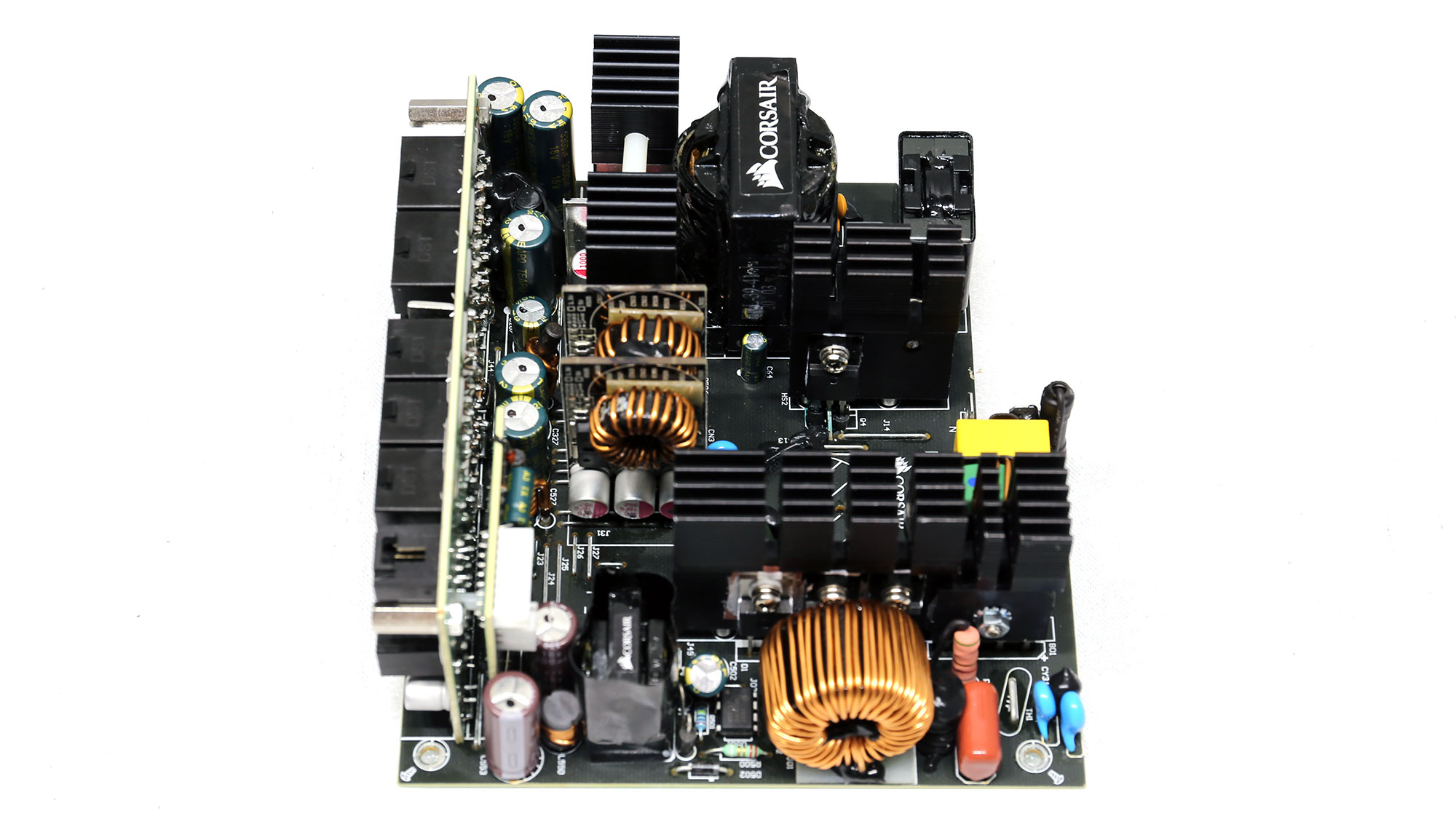
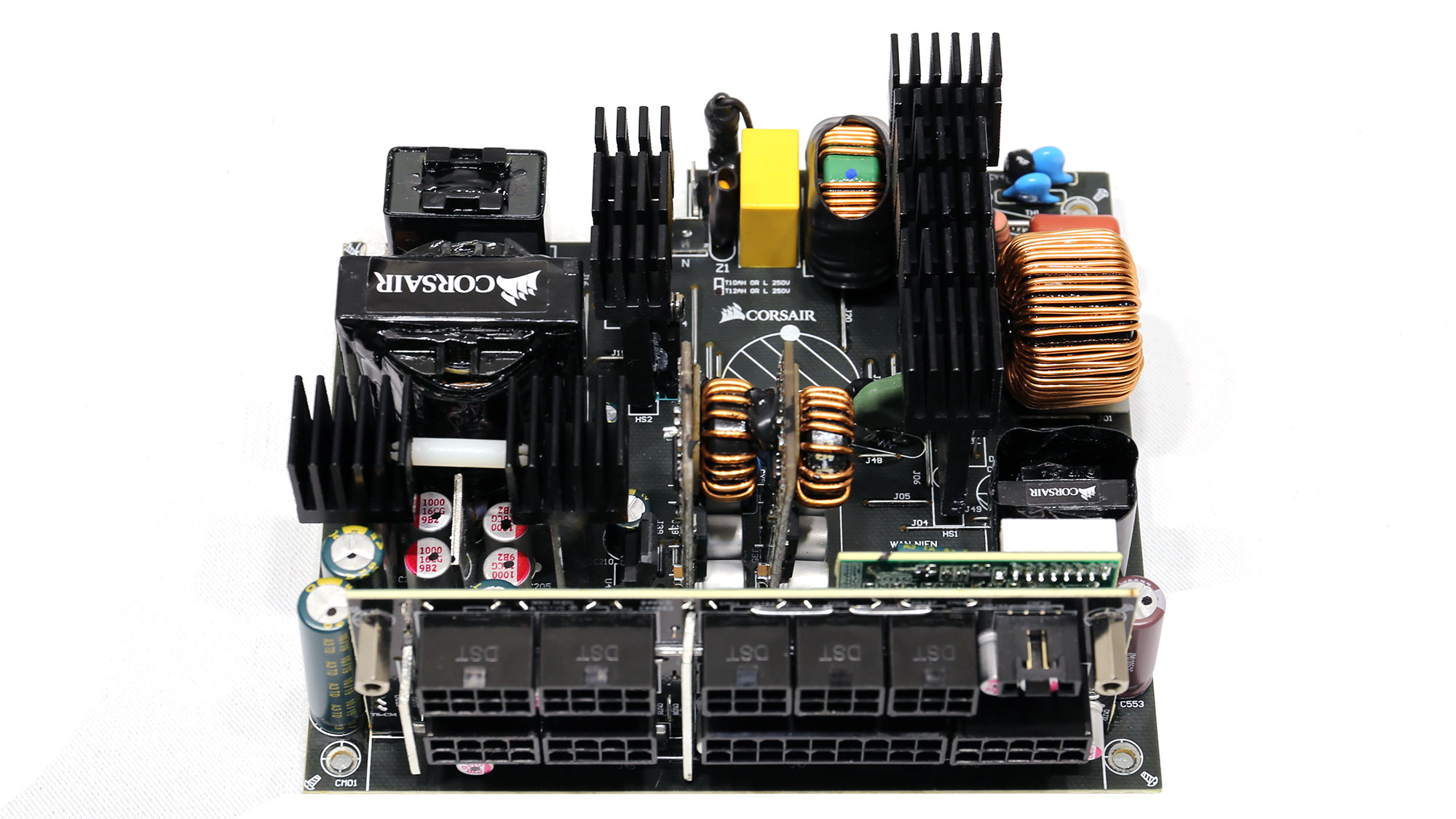

HEC made this platform under Corsair's guidance. For a merely Bronze or ETA-A- unit, this platform looks like overkill since the same design is used in higher efficiency units. Typically, in this category, we find a double forward topology, and in the best-case scenario, DC-DC converters on the secondary side. Corsair went instead with a half-bridge topology and an LLC resonant converter, delivering way better performance than the double forward design. The CX units use similar design platforms, provided by CWT and Great Wall, though.

Transient filter




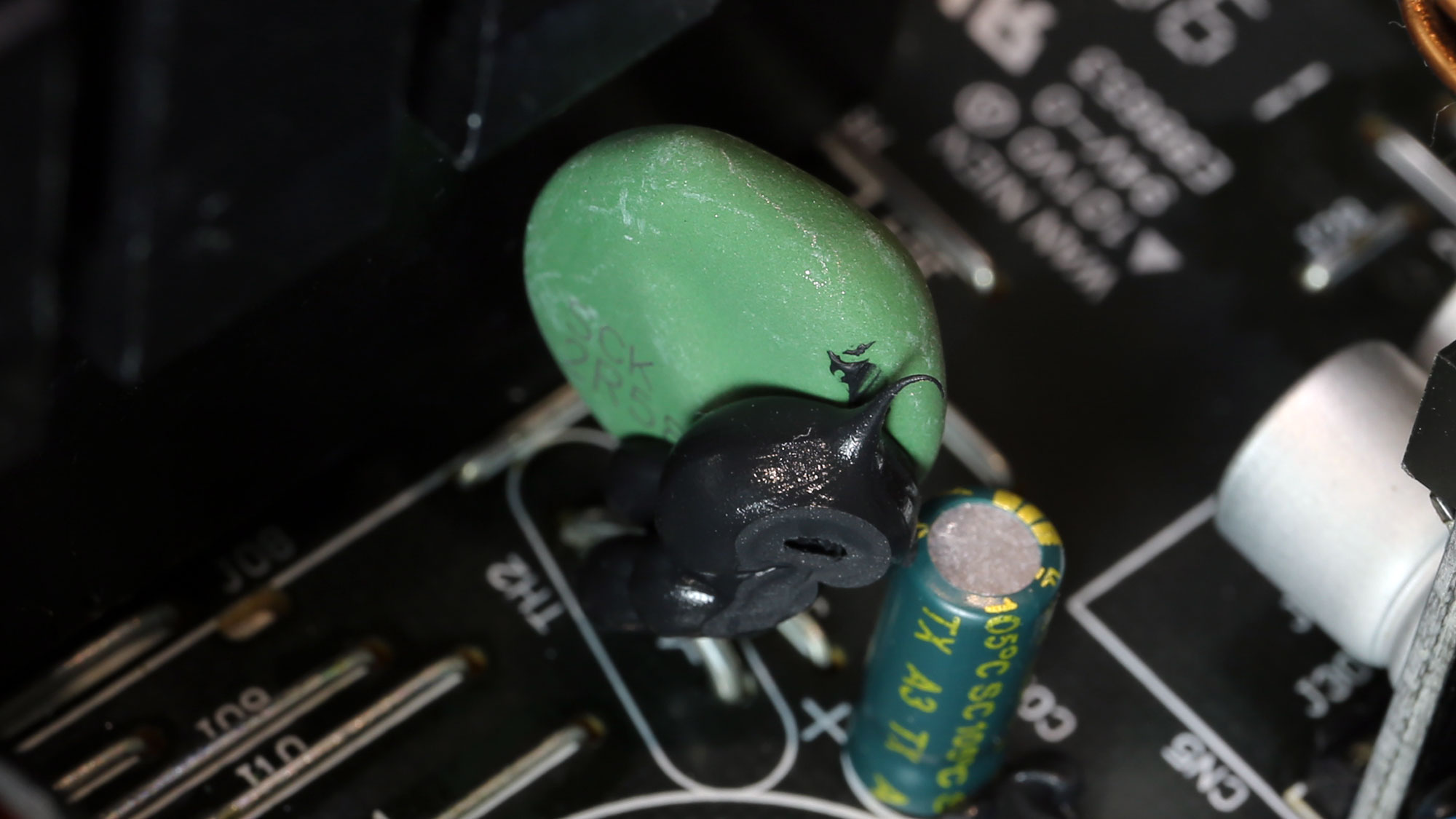
The EMI filtering stage includes all necessary parts, to efficiently suppress both incoming and outgoing EMI emissions. This will be clearly shown, though, in our EMC pre-compliance test. It also features a discharge IC for not losing energy on bleeding resistors. Finally, there is an MOV to suppress voltage surges, while the inrush current protection is handled by an NTC thermistor, which isn't supported by a bypass relay, though.

Bridge rectifiers

The pair of bridge rectifiers can handle up to 16 Amperes of current, so it won't have a problem handling this PSU's requirements.

APFC converter




The APFC converter uses two Infineon FETs and a single boost diode, provided by the same manufacturer. The bulk cap is by Hitachi, which recently sold its capacitor business to a Chinese brand. Finally, the APFC controller is a Champion CM6500 IC. Another Champion IC, the CM03X, is used to restrict vampire power by isolating the APFC converter during standby.

Main FETs and primary transformer




The main FETs are arranged in a half-bridge topology. An LLC resonant converter boosts efficiency. It is controlled by an MPS HR1001C IC.
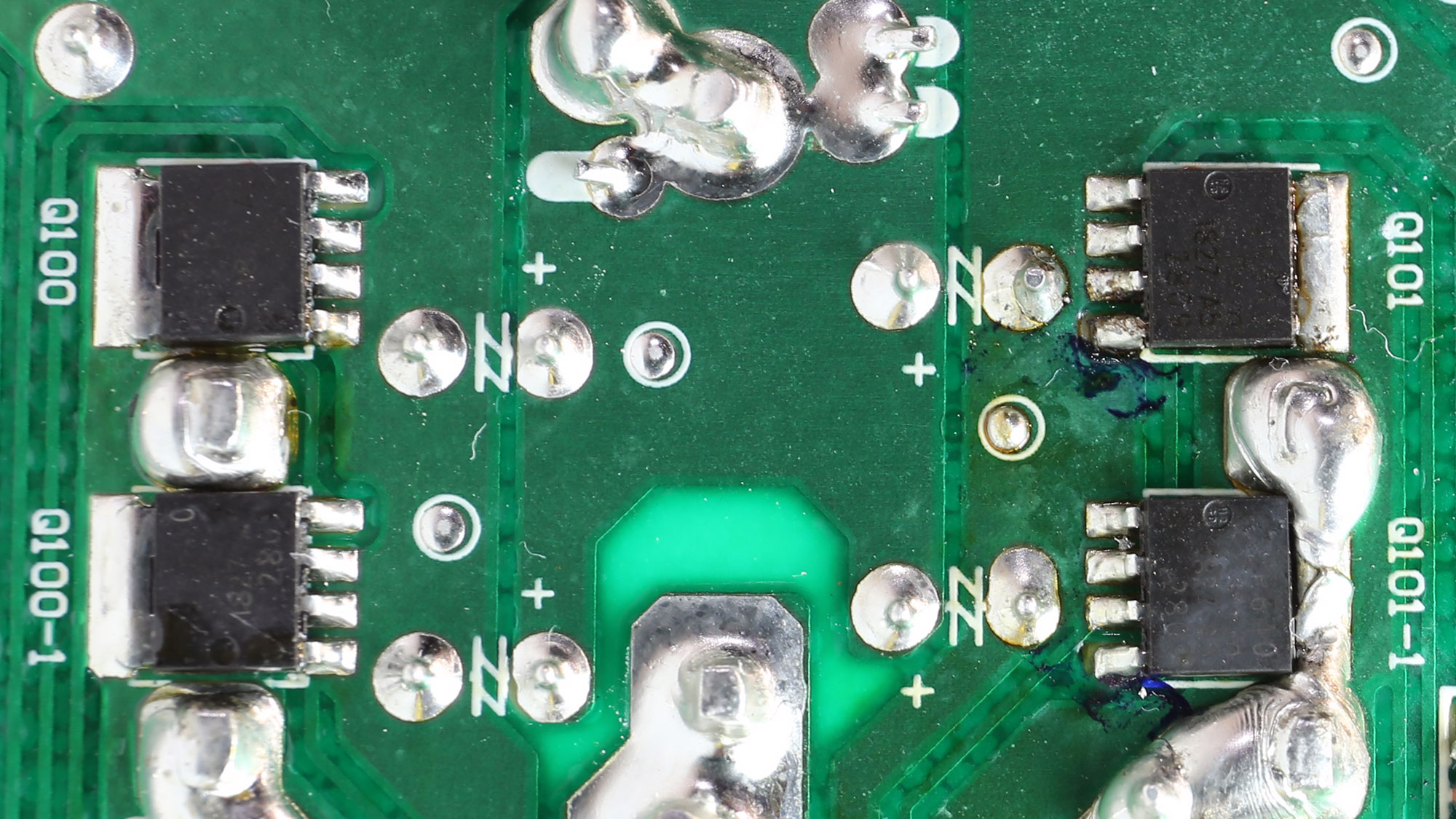
12V FETs and VRMs




The FETs that regulate the +12V rail are on the solder side of the main PCB. Four Nexperia FETs are used in total, for this purpose. The minor rails are generated through eight FETs and use an Anpec PWM controller.

Filtering caps
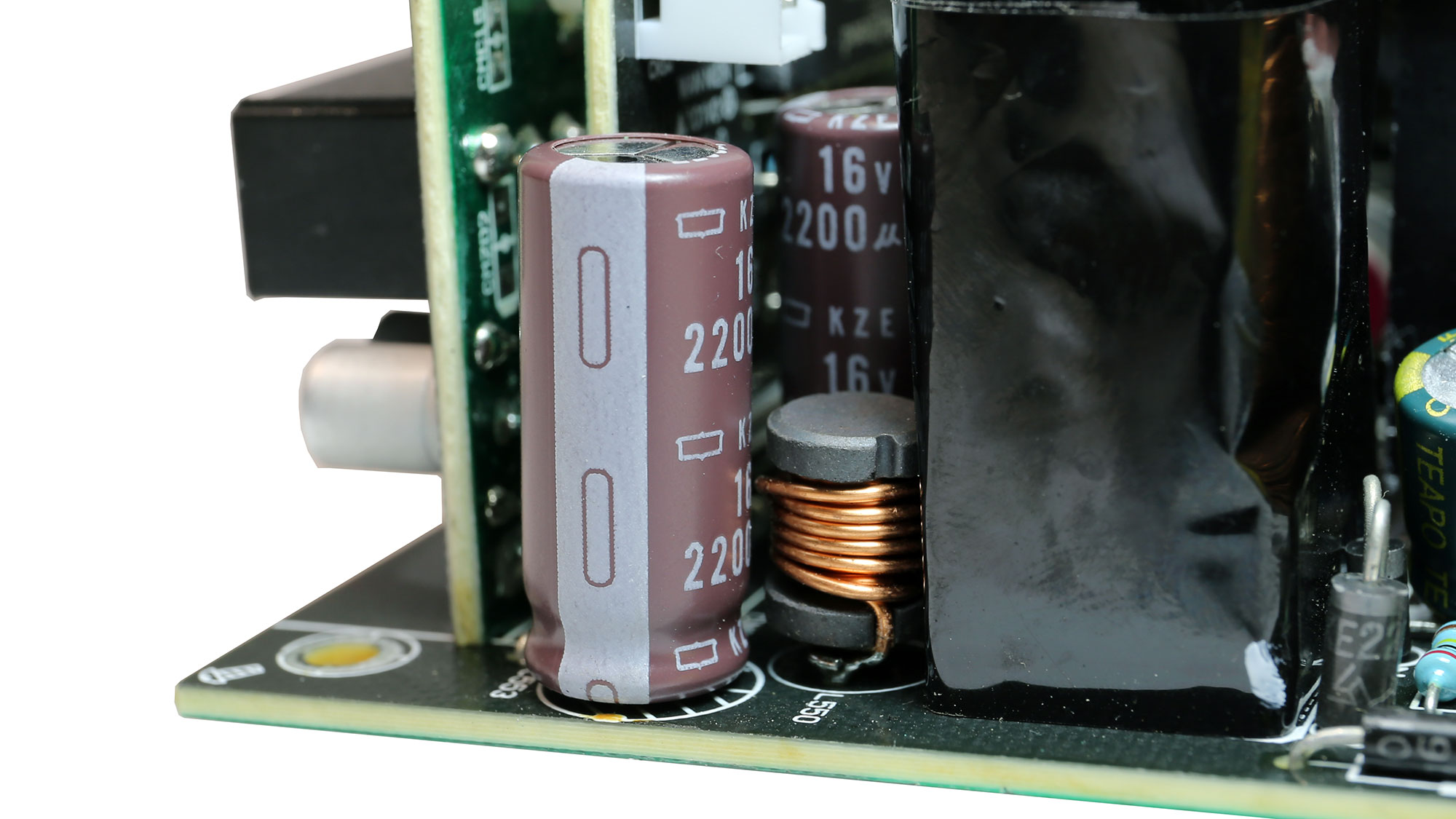


The electrolytic filtering caps on the secondary side are mostly provided by Teapo, and belong to a low-end line. A large number of polymer caps is also used, for ripple filtering purposes.

Modular board front


A number of Teapo polymer caps provides an extra ripple layer, at the face of the modular PCB.

5VSB Regulator


The Corsair CX650F's 5VSB circuit uses a single SBR on its secondary side. The PWM controller is a Power Integrations TNY290PG IC.

The supervisor IC is a Weltrend WT7527, supporting all essential protection features but OTP (Over Temperature Protection).

Soldering quality



The soldering quality is good.
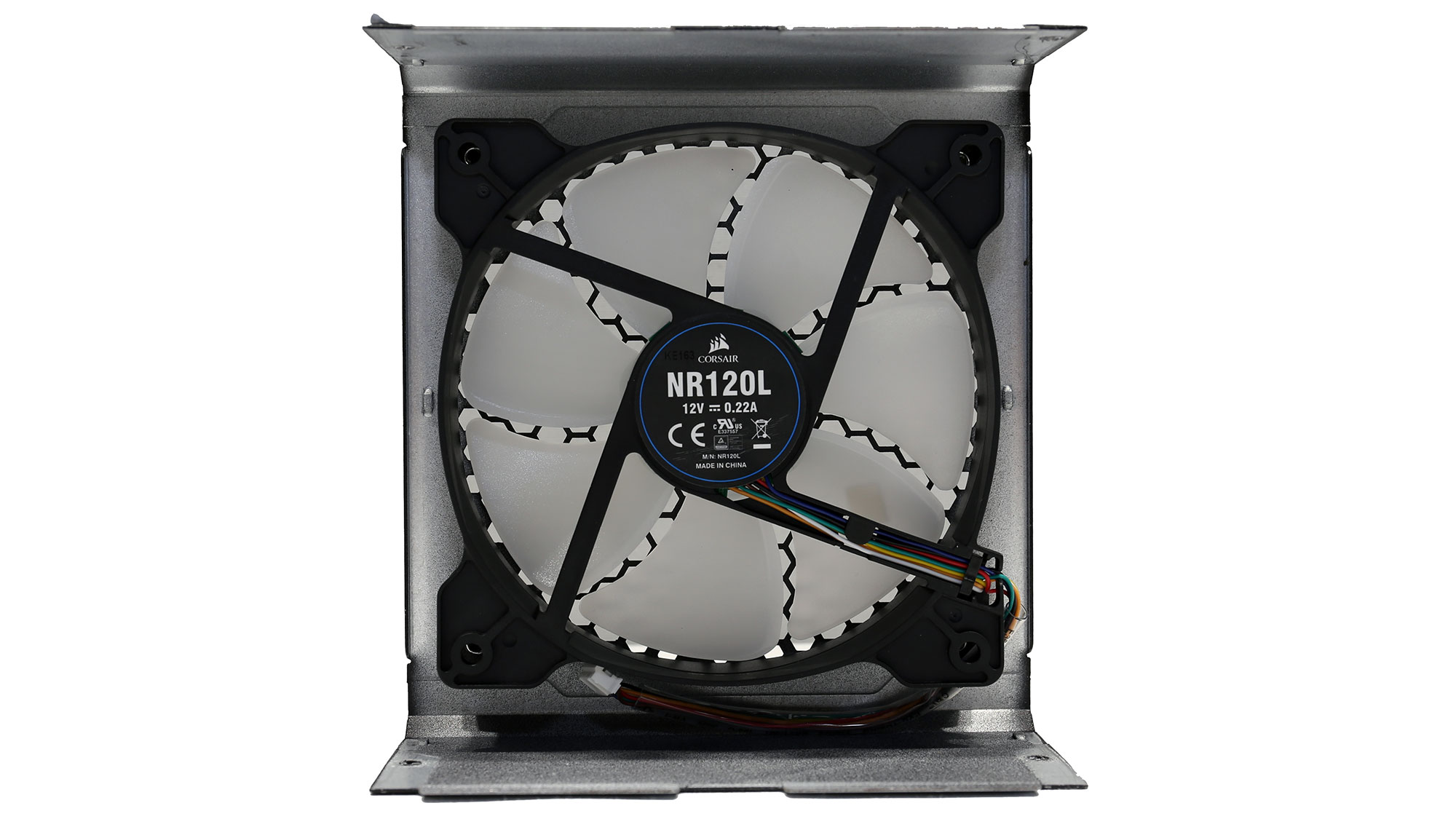
Cooling fan

The cooling fan on the Corsair CX650F measures 120mm across and uses a rifle bearing, so it will last long.
MORE: Best Power Supplies
MORE: How We Test Power Supplies
MORE: All Power Supply Content
Current page: Specifications and Part Analysis
Next Page Load Regulation, Hold-Up Time, Inrush & Leakage Current, Efficiency and Noise
Aris Mpitziopoulos is a contributing editor at Tom's Hardware, covering PSUs.